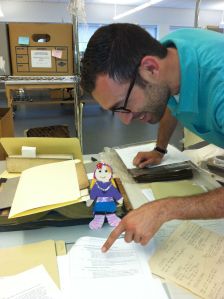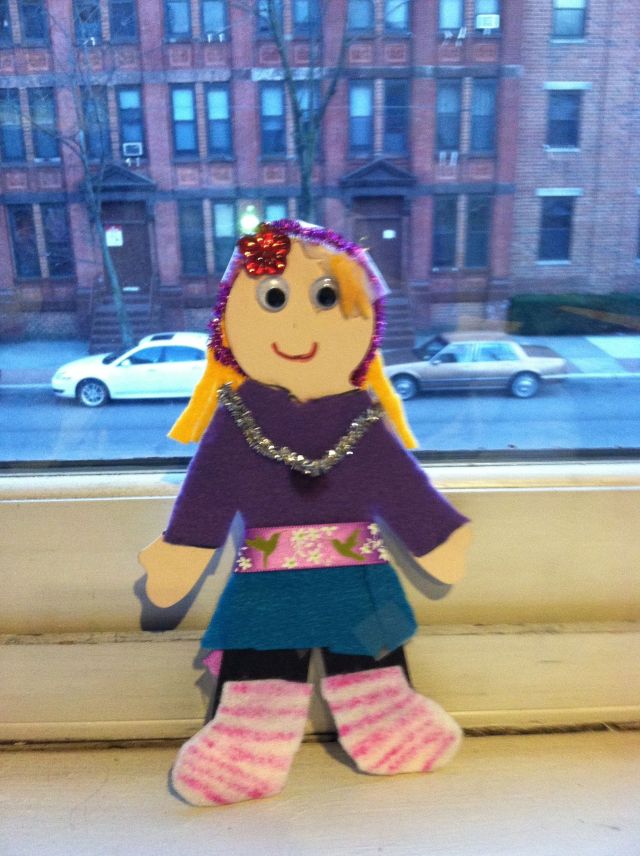I had a special visitor this past spring, Flat Maddie, sent to me by my niece who was doing a Flat Stanley project with her second-grade class. I think I had as much fun with this project as she did! Flat Maddie got a tour of Manhattan, including a visit with Patience and Fortitude, the library lions in front of the New York Public Library‘s 42nd Street main building, and a trip to JHU Comic Books (the best comics shop in NYC!).
I took Flat Maddie with me to work at the NYPL’s Manuscripts and Archives Division processing center in Long Island City, Queens, where I was a member of the team processing the records of the United States Sanitary Commission. Writing up her travelogue gave me the chance to explain what archives do and why historical records are so important. I wrote:
“At work, one of my co-workers showed Flat Maddie around a little.
“Archives are the papers, records, and other material created by individuals and organizations, collected in groups, and preserved so that we can study them and learn about history. Archivists are the people responsible for doing the collecting and preserving and making the records available for others to use. We arrange them in order (sometimes they’re a mess when we get them), put them into special folders and boxes that keep out dust and dirt and pollution, house them in rooms that protect them from heat and dampness, and write guides that help people understand the records and find what they want to look at.
“My co-workers and I are almost finished [note: finished as of 6/30/2013!] working on a huge collection of records from an organization called the United States Sanitary Commission. Women and men in the Northern part of the United States started it in 1861 to help Union soldiers during the Civil War. It continued to assist veterans and their families for several years after the war ended in 1865. People in the U.S.S.C. inspected the sanitary conditions of army camps to make sure that soldiers had access to clean drinking water, food, and medical supplies to prevent the serious illnesses that could kill them. They shipped supplies across the country, helped out in military hospitals, and helped soldiers recovering from wounds or illness find someplace to stay or make their way home to their families. They helped families find and get in touch with their fathers, brothers, or sons in the army who might be hospitalized—there were no phones or Internet yet to connect instantly, and even telegraphs were new and not yet common. People in the U.S.S.C. also helped soldiers and their families secure the pensions or back pay promised them by the federal government. There are hundreds of thousands of pages of all kinds of different records in this collection—it’s really, really big!
“I showed Flat Maddie some of the many notes I made to help me understand and organize the records, a folder of letters that I arranged, and some of the filled boxes of records from the collection.”






